| Phil Girdlestone started his railway
career in 1978 on the 2 foot gauge
Ffestiniog Railway in North Wales, UK. He
believed that there was much scope for
improvement in the FR locomotives and set
about trying to find ways of realising this.
He analysed and improved a host of details,
ranging from rod lubrication to plain
bearing axlebox design to improve
reliability as well as efforts to improve
efficiency. He was part of the small team
that re-designed and rebuilt an Alco 2-6-2T
switcher, which had been built for the First
World War battlefields and came to the FR in
1967. Its performance was revolutionised,
haulage capacity being increased by 60%.
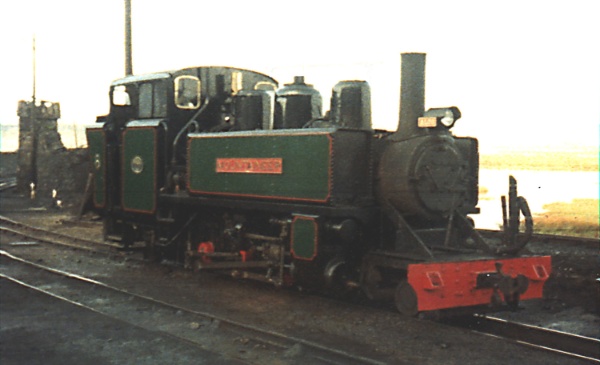
Alco 2-6-2T Mountaineer
Ffestiniog railway 1983
Ffestiniog locomotives were oil-fired and
the worldwide increase in prices of the
mid to late 1970's created quite a crisis,
and the resulting use of inferior and
cheaper qualities gave many operational
problems. At this time Girdlestone got to
know Porta and Wardale and as a result of
this association drafted a plan to rebuild
a locomotive with the Gas Producer
Combustion System to enable a return to
coal, reduce fuel costs and improve
reliability. The design work was carried
out during 1983 with long-range help and
advice from Porta and Wardale and the
locomotive (a Hunslet 2-4-0ST/T) was
rebuilt under his direction during 1984
while he was Manager of Boston Lodge
Works. Apart from the GPCS it had a Lempor
exhaust system, improved superheat and
other detail changes. After tuning up it
gave fuel costs only 73% of that it would
have incurred burning oil and compared
with the Alco and articulated "Fairlie"
types hauling the same weight trains it
was some 50% cheaper. It was re-converted
to burn oil in 1986 when prices dropped
after he had left the FR.
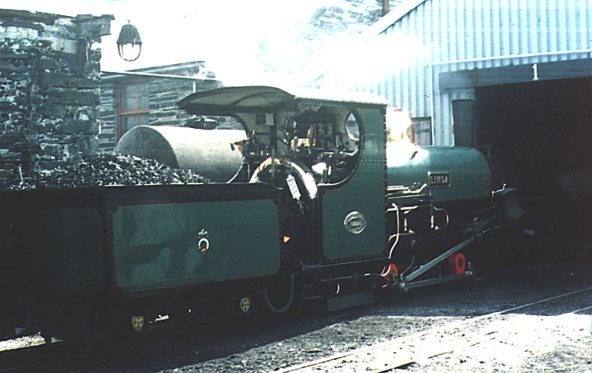
Hunslet 2-4-0 Linda
being prepared for duty at Boston Lodge
1985
Girdlestone was unhappy at the direction
FR locomotive policy was heading at the
time, which was towards "heritage"
replicas of old designs and he believed
that there was no reason why the form
could not be preserved whilst the internal
detail and efficiency was improved out of
all recognition. In 1984 he had been
offered the position of Wardale's
assistant with American Coal Enterprises
but funding was never obtained for this
project. Instead in 1985 he took up the
position of Project Engineer with Hugh
Phillips Engineering, which had a contract
to rehabilitate several Sudan Railway
Corporation locomotives for the famine
relief operation, which was then getting
under way. As part of this he designed a
Lempor exhaust system for these
locomotives (North British SRC 310 Class
2-8-2's). This was fitted to No.313, the
first of the six being overhauled and
after comparative trials with brake
locomotives showed a reduction in fuel
consumption of 12% authority was granted
for the remaining five to be so fitted.
Unfortunately, although preliminary work
was done to improve other SRC engines (a
double Lempor was designed for the 500
Class 4-8-2's as well as other
improvements) nothing more came of this
mainly because the aid agencies were
unhappy at the misuse of aid in Sudan and
withdrew much of their support.
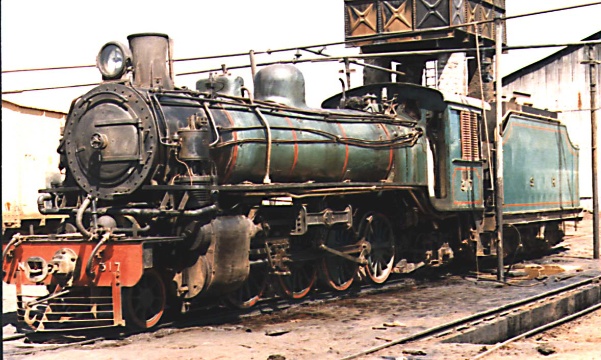
SRC 310 Class 2-8-2
fitted with Lempor exhaust system
In 1988 he was offered the position of
Mechanical Engineer to Alfred County
Railway, a 122km 2 foot gauge system in
Natal, South Africa which had just become
privatised. This used NGG16 2-6-2+2-6-2
Garratts, the largest 2 foot gauge steam
locomotives in the world. Redesigned (to
Class NGG16A) they incorporated the GPCS,
Lempor exhaust, improved spark arrestor,
lightweight multi-ring articulated piston
valves, improved valve events and improved
mechanical lubrication. Two were so
treated, the first, No.141 in 1989 and the
second No.155 in 1990. In comparative
testing 141 gave a fuel saving of 25%
compared to a standard Garratt and this
was easily maintained in regular service.
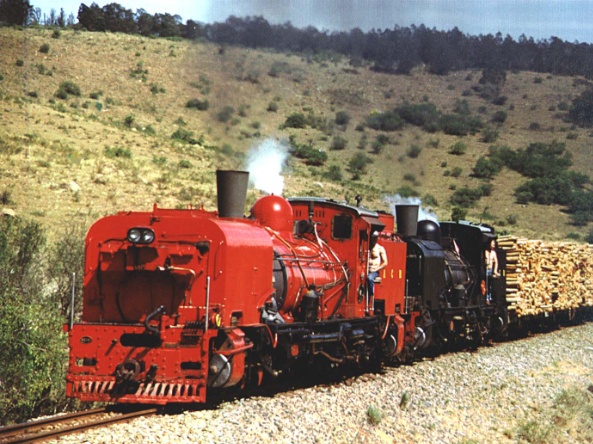
NGG16A Garratts No. 141
& 155 on a coastbound timber train
1992
In 1991, just before the change from SATS
(South African Transport Services, the
successor to South African Railways) and
before the change to semi-privatised
Spoornet he was co-opted on to a committee
of the remaining steam people to determine
what fuel options were open for a partial
retention of steam. At that time steam was
still in service (just) between Kimberley
and De Aar and in shunting services on the
Reef. The only result of this was the
first oil-fired SAR steam locomotive since
an experiment in1946. This was 15F 4-8-2
No.2916 which was converted at Germiston
depot using equipment from East African
Railways and he was brought in to help
supervise the tests and tuning up.
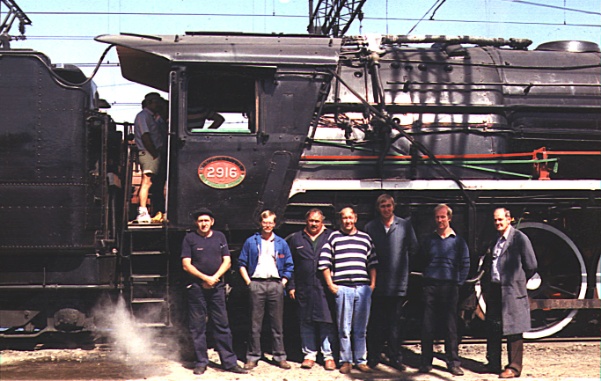
15F No. 2916 at
Germiston, PG second from left
The application of the East African
American-type trough burners to No.2916
was not particularly successful and
Girdlestone suggested an alternative. As a
result he was asked to design equipment
for the conversion of a 25NC 4-8-4. The
impetus behind all this work was to equip
locomotives for work during the dry
season, the formation of Spoornet having
seen elimination of steam in normal
service. It was now operated on behalf of
the Transnet Heritage Foundation and
normal line clearing and the making of
firebreaks had ceased. The new burners
were circular with superior atomising
characteristics and the first was applied
to a 25NC of Beaconsfield depot at
Kimberly. It was subsequently applied to a
second 25NC No.3417 and retrospectively to
15F No.2916 with success.
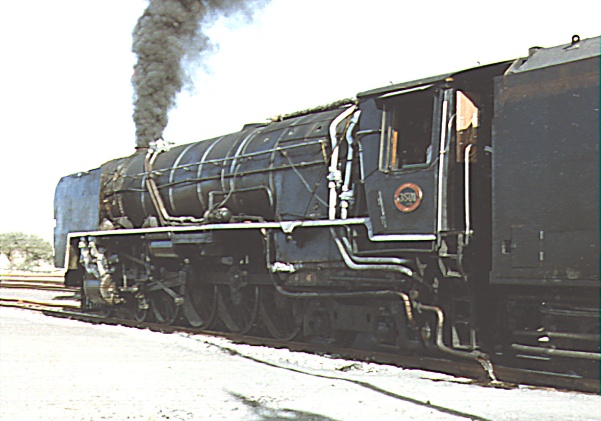
25NC No.3501 at Orange
River en route to De Aar
during trials with the improved oil
burning equipment
During 1996 Girdlestone was approached by
the West Coast Railway in Victoria,
Australia to design modifications to their
"R" Class 4-6-4 No. R711. Oil firing, a
double Lempor exhaust and piston valve
modifications were applied. In the 1980's,
it operated the fastest (70mph) regularly
scheduled passenger service in the world
and reportedly gave up to 30% greater
power and used 30% less fuel than the
standard "R". A second locomotive, R766,
was scheduled to be converted.
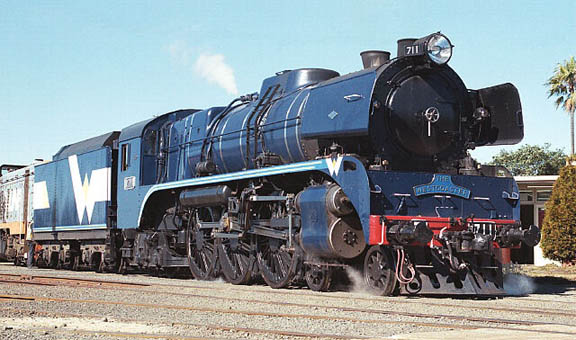
West Coast Railway No.
R711
photo courtesy of Yuri
Sos copyright 1999
Many thanks to
Yuri Sos for the information on the
R711
Unfortunately, the WCR suffered a
series of setbacks resulted in the WCR
ceasing operations in 2004. Both
locomotives now reside with Steamrail
Victoria. R711 was evidently
returned to service in 2008; however,
it's twin Lempor exhaust system has been
removed. R766 is currently being
converted from broad to standard gauge,
and if its twin Lempor was ever fitted,
it has now been removed.
The main freight workings on the Alfred
County Railway were dieselised in 1992 and
steam only retained a very secondary role.
Eventually Girdlestone resigned and ran
his own company which specialized in
locomotive and associated equipment
manufacture in addition to supply of
second hand equipment. His services also
included design and consultancy,
especially oil firing, boiler design to
modern standards and adaptation of old
standards, and modification work to
enhance performance, efficiency and
reliability. Phil maintained a huge
database of information relating to
design, past practice and modern
locomotive development which was
invaluable in assisting enquiries in many
spheres. He continued a professional
association with Porta until Porta's death
in 2002 and was one of very few steam
locomotive development engineers still
active and was regularly consulted by
railways and individuals worldwide.
Work has included design and manufacture
of a Lempor exhaust for locomotive Camila
(Tranex Turismo, Ushuaia, Argentina), a
burner for the second "R" Class conversion
(West Coast Railway, Australia) and the
design of boilers and cylinders for new
locomotives (UK customer). In 2006,
Girdlestone and Associates completed a
second 0-4-0+0-4-0 Garratt for the FCAF in
Argentina, incorporating significant
improvements.
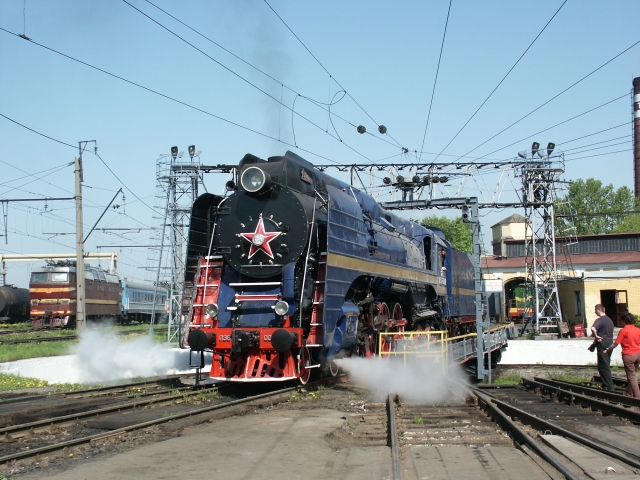
Trans-Siberian Express
P36.0032
One of Phil's last steam
projects was installing a dual-Lempor
exhaust on Trans-Siberian Express 4-8-4
P36.0032 shown above. Consideration
was being given to the future addition of
the Gas Producer Combustion System.
Read more about this locomotive
here: https://www.goldeneagleluxurytrains.com/luxury-travel-blog/new-lease-life-p36-locomotive/
One of Phil's final efforts
was the publication of a book on the
design, development and history of the
South African Railways Class 25NC and 25C
4-8-4 locomotives. Titled Camels and
Cadillacs - A History of the South
African Railways 25 Class Condensers and
25 NC 4-8-4's. The book had been
available from Camden Miniature Steam
Services in the UK. Apparently the
original printing sold out and the book is
not currently avaialble.
Sadly, Phil passed away on
April 20, 2016 after a long battle with
cancer. Read more about Phil's work here:
http://csrail.org/newsroom/2016/3/17/fs5sdiafzcvtx7qr17l29cwymkir51
Another book by Phil has
recently been published (October 2017),
titled "Here Be Dragons", detailing his
work with steam locomotives around the
world. This book is also available from
Camden Miniature Steam Services in the UK
(https://www.camdenmin.co.uk/products/here-be-dragons).
|